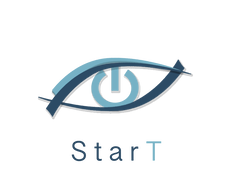ESR2: Interaction map of cis-regulatory elements controlling ABAC4 in human retina
|
Partner
Spanish National Research Council, Seville, Spain (www.csic.es; www.upo.es/CABD/GomezSkarmetaLab) Supervisor Prof. Dr. J.R. Martinez-Morales / Prof. Dr. J.L. Gomez-Skarmeta |
Soraya Kalayanamontri
Hi, I’m Soraya from Thailand where the land of the smiles are! I’m appreciated to be a part of ESR in this program. When I worked in my country I have been involved in the particular technique lab including CRISPR-Cas9 mediated genome editing to create zebrafish mutant lines, for example. However, in this program I’m hopefully that my PhD journey would be very powerful of knowledge, technology, connection, culture and even open my experience to other countries. As a Star ITN student, it was an honour to participate in this program. We met new friends and professors from other countries, so our consortium is quite full of strong particular experts in any part of biological and also bioinformatics sciences. We explored the different cultures and the new surrounding environment which was a remarkable memory. Apart from gathering results in our project we also shared and solved the project's problems with each other even though we missed the fundraising activity for Stargardt organization and visiting one of our host country because of the Covid pandemic, but we continued our online program instead. In addition, we learned a lot of stuff including things for that we needed for Ph.D. student level. Therefore, this was a wonderful memory for me to get this great opportunity and I will keep it as the best experience of my entire life. My prospected date of obtaining the degree is uncertain. I moved the Ph.D. program to the university in Thailand. I hope that I will take more time to obtain my degree hopefully within two years for a minimum period. As a future career, I expect to see myself to be a researcher (PI) like many people but specialize in zebrafish models (could develop the toxicity test, epigenetics, cancer, and so on (if possible). |
Abstract
Although the ABCA4 gene was identified over a decade ago, its transcriptional regulation has not been studied in relevant human cells such as retina. Data about CTCF binding sites, DNase I hypersensitivity sites and histone modifications (H3K4me1, H3K27ac) generated in other cell types can be found in publicly available databases (e.g. ENCODE, Roadmap Epigenomics). Here, ESR2 aims to identify and functionally characterise cis-regulatory elements (CREs) controlling ABCA4 expression in adult human retina. ESR2 will first use the recently developed chromosome conformation technique HiChIP to determine the target genes of the CREs that are active in human retinal cells. To that end ESR2 will perform HiChIP using both the Pol II and H3K27ac antibodies that mark active promoters and enhancers, respectively. This will allow us to precisely determine which active enhancers are directly contacting the ABCA4 promoter in human retinal cells. ESR2 will then use stable enhancer transgenic assays in zebrafish to evaluate the spatiotemporal activity of the identified CREs.
Although the ABCA4 gene was identified over a decade ago, its transcriptional regulation has not been studied in relevant human cells such as retina. Data about CTCF binding sites, DNase I hypersensitivity sites and histone modifications (H3K4me1, H3K27ac) generated in other cell types can be found in publicly available databases (e.g. ENCODE, Roadmap Epigenomics). Here, ESR2 aims to identify and functionally characterise cis-regulatory elements (CREs) controlling ABCA4 expression in adult human retina. ESR2 will first use the recently developed chromosome conformation technique HiChIP to determine the target genes of the CREs that are active in human retinal cells. To that end ESR2 will perform HiChIP using both the Pol II and H3K27ac antibodies that mark active promoters and enhancers, respectively. This will allow us to precisely determine which active enhancers are directly contacting the ABCA4 promoter in human retinal cells. ESR2 will then use stable enhancer transgenic assays in zebrafish to evaluate the spatiotemporal activity of the identified CREs.


